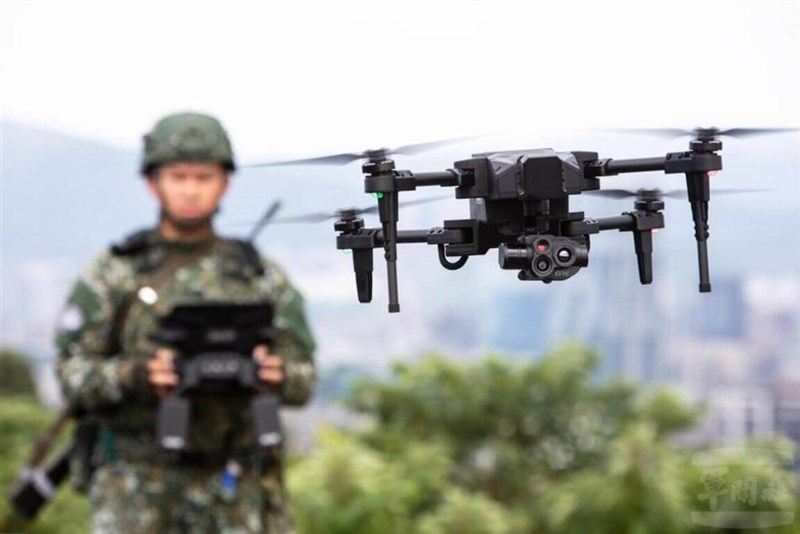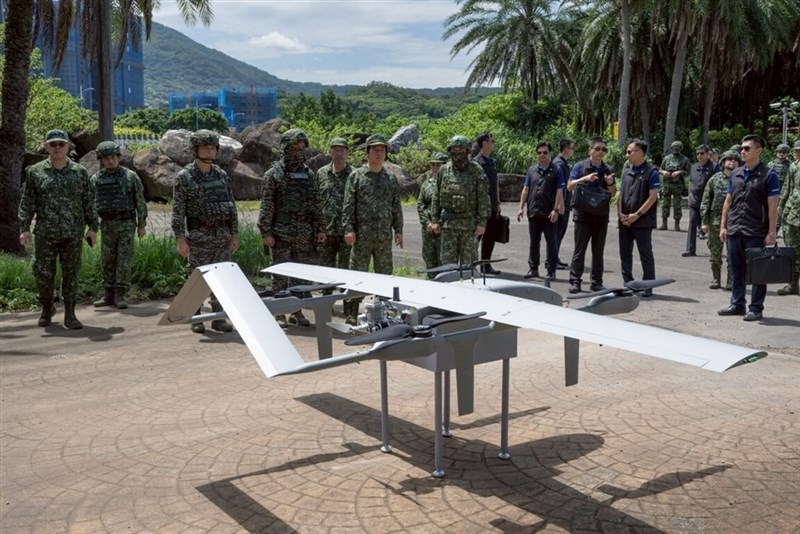Taiwan should seek to leverage PLA satnav system to counter drone threat: Experts

Taipei, Sept. 2 (CNA) Taiwan's information and electronic warfare units would play a pivotal role in drone warfare, and they should develop the capability to access the People's Liberation Army's (PLA) BeiDou Navigation Satellite System, a retired Air Force lieutenant general said Tuesday.
Electronic warfare usually targets and manipulates the electromagnetic spectrum to control information flow, with belligerents trying to maintain control, retired Air Force Lieutenant General Andy Hu (胡延年) said at the seminar that discussed threats posed by the PLA and Taiwan's possible response.
Rather than deploying missiles against enemy drones, belligerents are therefore more likely to resort to information and electronic warfare, said Hu, who formerly served as Taiwan's deputy chief of general staff for intelligence.
"If we have the money, we can certainly buy attack drones. But the ability to disrupt, deceive, lure, and divert enemy drones is, in my view, something we must urgently develop right now," he said at the seminar hosted by the Taiwan Thinktank.
Army Logistics Command Information Center Director Wang Ching-an (王清安) said during his presentation that the PLA is now reportedly capable of disrupting the Starlink satellite constellation.
China claimed that it developed that capability in 2024, after investing considerable resources in the effort, which was allegedly spurred by its failure to track the flight carrying then United States House Speaker Nancy Pelosi during her visit to Taiwan in August 2022, Wang said.
Hu argued that Taiwan's understanding of China's BeiDou Navigation Satellite System (BDS), which guides PLA drones, and its ability to leverage the BDS in the event of a war is "a serious matter that we need to consider right now."

Speaking with CNA on the sidelines of the event, Hu said that gaining access to the BDS would confuse PLA drones as they would identify Taiwanese drones as their own.
In addition, Taiwanese drones could use the BDS for navigation if Taiwan's own satellite navigation system is jammed by the PLA, Hu said.
Kao Chih-jung (高志榮), a researcher at the Institute for National Defense and Security Research, said at the forum that there are four counter-drone methods currently employed by the United States, which could serve as reference for Taiwan if PLA drone swarms should attack Taiwan's military airbases.
In such an attack, China may use a disguised vessel to transport and launch the drone swarms from the outer boundaries of Taiwan's contiguous zone, which extends 24 nautical miles from Taiwan's shoreline, he said in a question and answer session.
One of the U.S. methods to counter such attacks is the use of high-power microwave (HPM) systems, which can fry drone navigation systems, but can also pose a fire hazard to nearby residential areas, Kao said.
Another tactic is the use of counter-drone jammers, which can be used in conjunction with a radar system to incapacitate attack drones, Kao said.
Also, the U.S. has developed a 2.75-inch laser-guided rocket for drone defense, he said, adding, however, that the shrapnel and drone debris from such attacks could damage residential buildings.
The fourth U.S. example is its deployment of drone swarms near some military air bases, Kao said. Those drones are designed specifically to counter micro-drones and detonate upon collision, he added.
In his presentation, Kao said the PLA would need about two weeks of intense preparation before it could launch a military campaign against Taiwan. Such preparations would likely be detected by other countries, he said.
According to Kao, the PLA Rocket Force has about 1,000 short-range ballistic missiles, including DF-11, DF-15, and DF-16 missiles, aimed at Taiwan. It also has approximately 1,300 medium-range missiles intended for use against countries in the Indo-Pacific region, and which could also be redirected toward Taiwan if necessary, he said.
In the event of a PLA attack, the initial wave would target Taiwan's air bases, air defense systems, command centers, radar stations, surface-to-surface missile sites, and ground forces, Kao said.
The key targets are likely to be Taiwan's Hsiung Feng IIE missile bases in Taoyuan's Yangmei, Luzhu, and Taishan districts, and in New Taipei's Sanxia District, he said.
Taiwan's military, therefore, should build its air defense arsenal in case the country comes under a saturation attack by PLA missiles, Kao said.
- Society
Rail services resume normal operations after magnitude 7.0 earthquake
12/28/2025 11:00 AM - Society
Saturday's quake 2nd strongest since 1999; aftershocks warned
12/28/2025 02:42 AM - Society
Metro, rail services slowed after Yilan quake; some TSMC staff evacuated
12/28/2025 01:40 AM - Society
Magnitude 7.0 earthquake rocks northeastern Taiwan
12/27/2025 11:33 PM - Cross-Strait
Xi meeting would hinge on 1992 Consensus, anti-independence: KMT chair
12/27/2025 09:09 PM